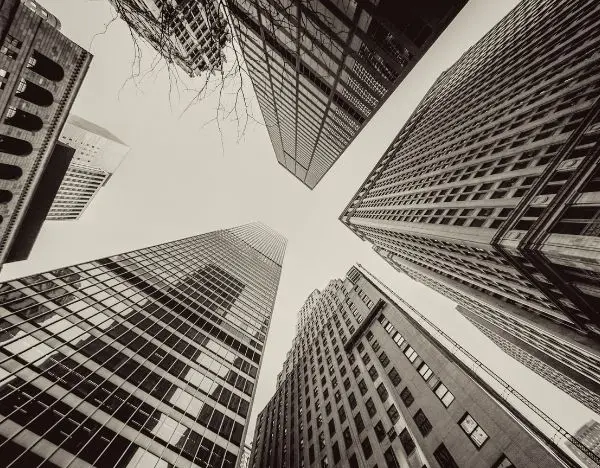In the bustling construction sites of New York City, the risk of injury looms as prominently as the towering structures being erected. Among these hazards, falling debris stands out as a common yet often underestimated threat to construction workers. At Arye, Lustig & Sassower, P.C., we have witnessed first-hand the impact of these accidents on the lives of workers and their families.
The Reality of Falling Debris Accidents
In February 2016, a construction worker at a Midtown Madison Avenue building demolition site was struck in the head by a piece of falling concrete as he worked on the 20th floor of the structure. With power to the elevator shut off, firefighters engaged in a harrowing rescue by lowering the unconscious victim by rope on a stretcher through an interior shaft. The man was admitted to a hospital for treatment of a severe head injury.
This incident is illustrative of a “struck by object” construction accident injury, one of the “fatal four” causes of death on construction sites, according to the U.S. Occupational Safety and Health Administration or OSHA. The other three in the fatal four are falls, electrocution, and caught-in accidents. The fatal four accounted for almost 60 percent of construction worker job-related deaths in 2014, reports OSHA, with struck-by-object accidents accounting for almost 10 percent of the total.
Contributing Factors of Falling Debris Accidents

Falling debris on construction sites can range from small tools to large pieces of building materials. These objects, when dropped from a height, can cause severe injuries or even fatalities. The physics of falling objects dictates that even a small item can become deadly when falling from a significant height.
Falling debris accidents in construction sites are complex events often resulting from a convergence of various factors. Understanding these factors is crucial in preventing future incidents and in providing legal support to those affected. Here’s an expanded look at the contributing factors:
1. Inadequate Safety Protocols
- Poor Site Management: Sites lacking systematic safety checks increase the risk of debris-related accidents. Regular inspections and maintenance of work areas, especially at heights, are essential.
- Insufficient Worker Training: Workers not adequately trained in safety practices can inadvertently contribute to accidents. Comprehensive training programs emphasizing the importance of securing tools and materials are vital.
2. Negligent Behavior
- Human Error: Simple mistakes, such as leaving tools unsecured or improperly stacking materials, can have dire consequences.
- Communication Failures: Miscommunication or lack of communication about overhead hazards can lead to workers being unknowingly exposed to risks.
3. Equipment and Material Handling
- Faulty Equipment: Defective or poorly maintained equipment, such as hoists or cranes, can drop loads, resulting in accidents.
- Improper Material Storage: Overloading or incorrectly storing materials at height increases the risk of these items falling.
4. Environmental Factors
- Weather Conditions: High winds, rain, or snow can destabilize materials and equipment, leading to falling debris.
- Vibration and Impact: Vibrations from heavy machinery or impact from other construction activities can dislodge materials.
5. Structural Issues
- Scaffolding Instability: Scaffolding that is not properly erected or maintained can collapse, causing materials to fall.
- Temporary Structures: Weaknesses in temporary structures, such as formwork or shoring, can lead to collapses.
6. Regulatory Compliance
- Lapses in Adhering to Regulations: Non-compliance with safety standards and regulations set by OSHA and local authorities often leads to preventable accidents.
7. Third-Party Actions
- Actions of Other Contractors: On multi-contractor sites, the actions of one contractor can inadvertently create hazards for others.
At Arye, Lustig & Sassower, P.C., our understanding of these multifaceted contributing factors is integral to our approach in representing construction workers injured by falling debris. By comprehensively examining these aspects, we aim to not only provide legal redress but also to contribute to enhancing safety standards across construction sites in New York City.
Legal Protections for Construction Workers
In New York, construction workers are safeguarded by a comprehensive legal framework designed to ensure their safety and provide recourse in the event of injuries caused by falling debris. These protections are among the most robust in the nation, reflecting the inherent risks in the construction industry. An expanded view of these legal protections includes:
1. New York Labor Law Section 240(1) - The Scaffold Law
This statute is pivotal for construction worker safety. It imposes absolute liability on owners and contractors for elevation-related injuries, including those caused by falling objects. This means that if an object falls and causes injury because it was not properly secured, the law favors the injured worker.
The law covers various scenarios beyond scaffolding accidents, including any gravity-related accident, which encompasses falling debris.
2. New York Labor Law Section 241(6)
This section mandates that owners and contractors comply with specific safety rules and regulations. It requires that construction, demolition, and excavation sites be constructed, equipped, arranged, operated, and conducted to provide reasonable and adequate protection to workers.
The New York State Industrial Code spells out these requirements, covering a wide range of safety measures, including those for preventing falling debris injuries.
3. Workers' Compensation
Workers' compensation laws provide benefits to injured workers regardless of fault. These benefits cover medical expenses, lost wages, and disability. However, they do not compensate for pain and suffering.
While workers' compensation bars lawsuits against employers, it does not preclude legal action against third parties like property owners or contractors who may be liable under Sections 240 and 241.
4. General Obligations Law Section 200 and Common Law Negligence
This law requires that work sites be maintained in a safe condition. Owners and contractors must exercise reasonable care to protect workers.
Common law principles of negligence are also applicable. If an injury is caused by a condition or practice that the contractor or owner knew or should have known was unsafe, they can be held liable.
5. OSHA Regulations
The Occupational Safety and Health Administration (OSHA) sets federal safety standards. While OSHA violations do not automatically result in civil liability, they can be used as evidence of negligence in personal injury lawsuits.
6. Right to Sue for Damages
In cases where workers are injured due to someone else's negligence or a violation of safety statutes, they have the right to sue for damages. This can include compensation for pain and suffering, which is not available under workers’ compensation.
7. Proactive Legal Advocacy
Firms like Arye, Lustig & Sassower, P.C. play a crucial role in navigating these laws and advocating for injured workers' rights. Our experience helps ensure that injured workers receive the full spectrum of legal protections available to them.
In conclusion, New York's legal framework offers substantial protections to construction workers, particularly in the context of falling debris accidents. Understanding these laws and how they apply is essential for anyone involved in the construction industry, especially those who have been injured on the job. Our firm remains dedicated to upholding these protections and ensuring that injured workers receive the justice and compensation they deserve.
The Role of Arye, Lustig & Sassower, P.C.
Our firm, with a legacy dating back to 1965, has been at the forefront of advocating for construction workers injured by falling debris. Our approach involves:
- Thorough Investigation: We meticulously gather and analyze evidence to build a strong case.
- Experience in Construction Accident Litigation: Our deep understanding of construction site dynamics and New York labor laws gives us a strategic edge.
- Client-Centered Approach: We prioritize the needs and well-being of our clients, guiding them through every step of the legal process.
Case Histories and Success Stories
Our track record includes numerous successful outcomes for clients injured by falling debris. For instance, we secured a significant recovery for a worker who sustained a traumatic brain injury from a falling object at a construction site. These cases underscore our commitment to holding negligent parties accountable and securing the compensation our clients deserve.
Conclusion
Falling debris is a serious hazard in the construction industry, particularly in a dense urban environment like New York City. At Arye, Lustig & Sassower, P.C., we are dedicated to protecting the rights of construction workers who have been injured due to this overlooked risk. Our goal is not just to win cases, but to ensure safer work environments through diligent legal advocacy.
For more information or to discuss a potential case, please contact us. Remember, your safety and legal rights are our top priority.



